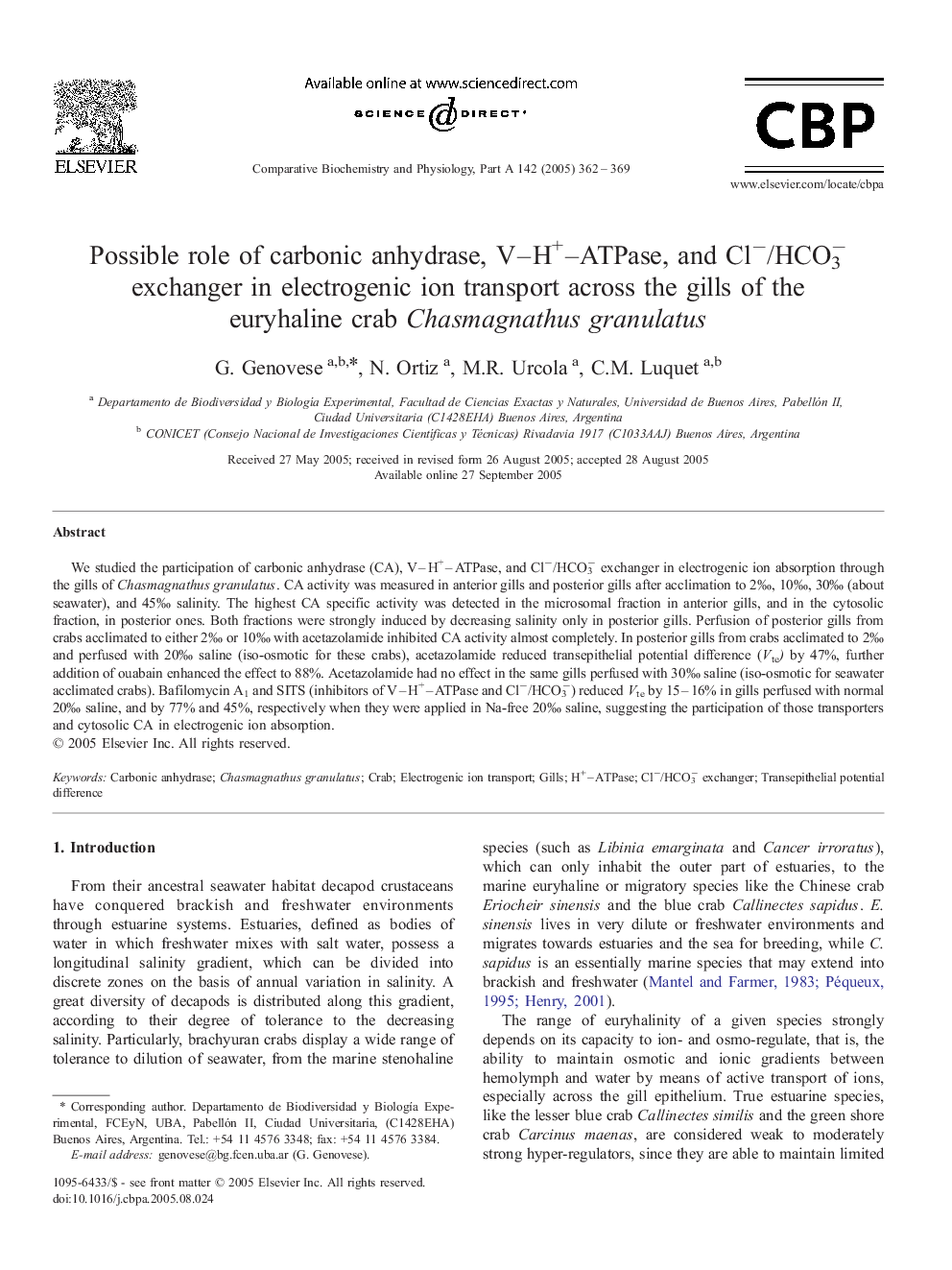| Article ID | Journal | Published Year | Pages | File Type |
|---|---|---|---|---|
| 10819319 | Comparative Biochemistry and Physiology Part A: Molecular & Integrative Physiology | 2005 | 8 Pages |
Abstract
We studied the participation of carbonic anhydrase (CA), V-H+-ATPase, and Clâ/HCO3â exchanger in electrogenic ion absorption through the gills of Chasmagnathus granulatus. CA activity was measured in anterior gills and posterior gills after acclimation to 2â°, 10â°, 30â° (about seawater), and 45â° salinity. The highest CA specific activity was detected in the microsomal fraction in anterior gills, and in the cytosolic fraction, in posterior ones. Both fractions were strongly induced by decreasing salinity only in posterior gills. Perfusion of posterior gills from crabs acclimated to either 2â° or 10â° with acetazolamide inhibited CA activity almost completely. In posterior gills from crabs acclimated to 2â° and perfused with 20â° saline (iso-osmotic for these crabs), acetazolamide reduced transepithelial potential difference (Vte) by 47%, further addition of ouabain enhanced the effect to 88%. Acetazolamide had no effect in the same gills perfused with 30â° saline (iso-osmotic for seawater acclimated crabs). Bafilomycin A1 and SITS (inhibitors of V-H+-ATPase and Clâ/HCO3â) reduced Vte by 15-16% in gills perfused with normal 20â° saline, and by 77% and 45%, respectively when they were applied in Na-free 20â° saline, suggesting the participation of those transporters and cytosolic CA in electrogenic ion absorption.
Keywords
Related Topics
Life Sciences
Biochemistry, Genetics and Molecular Biology
Biochemistry
Authors
G. Genovese, N. Ortiz, M.R. Urcola, C.M. Luquet,
